|
| |
 
The Natural Resources Conservation Service —
Helping People Help the Land.
Subscribe to NRCS This Week
| NRCS This Week Articles Index | NRCS
This Week Archives |
Contact Us |
Where to Get Information
|
eNotes from
NACD |
 TSP Express
(Requires Adobe Acrobat.) TSP Express
(Requires Adobe Acrobat.)

California
 America's
Day Begins on Guam America's
Day Begins on Guam
Last year's reorganization of the Hawaii and Pacific
Basin areas created the Pacific Islands Area that is organized into a western
and eastern area. Guam is the center of the
western portion of the newly established Pacific Islands Area.
 Note:
when the above story appears, drag your cursor onto the image and click on the "expand to
regular size" icon that will appear in the lower right hand corner of
the image. Note:
when the above story appears, drag your cursor onto the image and click on the "expand to
regular size" icon that will appear in the lower right hand corner of
the image.
Florida
The following two stories
Requires
Windows Media Player

 Florida Working Up EQIP Applications
Florida Working Up EQIP Applications
Many applications were received by the NRCS in Florida for EQIP
projects in 2007.
 Good Year for Florida NRCS
Good Year for Florida NRCS
Florida State Conservationist Niles Glasgow says 2006 was a very good year
for conservation efforts in the State, especially since a break in the weather
allowed them to catch up on hurricane recovery efforts.
Minnesota
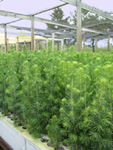 Red
Lake Band of Chippewa Indians Host Tour Red
Lake Band of Chippewa Indians Host Tour
Minnesota NRCS Area 1 staff recently got to see the good reforestation and plant
materials work by the Red Lake Band of Chippewa Indian’s Department of Natural
Resources (RLDNR). Since 2001, the RLDNR forestry program has successfully used
funding and technical assistance through the Environmental Quality Incentives
Program (EQIP) for their reforestation efforts.
Nebraska
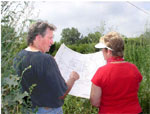 NRCS
Helps Plant Seeds of Hope at Healing Garden NRCS
Helps Plant Seeds of Hope at Healing Garden
A small seed can grow into something great. That is the symbolic idea behind the
AiKiRuti Healing Garden. AiKiRuti (pronounced Ikey- ru-dee) is a project started
by members of the Winnebago Tribe. AiKiRuti (which means “helping hand”) hopes
to be just that in fighting substance abuse in the Winnebago Tribe and
their northeast Nebraska community.
 Note:
when the above story appears, drag your cursor onto the image and click on the "expand to
regular size" icon that will appear in the lower right hand corner of
the image. Note:
when the above story appears, drag your cursor onto the image and click on the "expand to
regular size" icon that will appear in the lower right hand corner of
the image.
Connect to
NRCS' State
News,
Newsroom, and
News Releases!

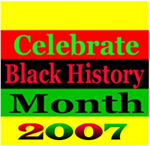 February
2007 Is Black History Month February
2007 Is Black History Month
To recall and celebrate the positive contributions to our nation made by people
of African descent, American historian Carter G. Woodson established Black
History Week. The first celebration occurred on Feb. 12, 1926. For many years,
the second week of February was set aside for this celebration to coincide with
the birthdays of Black abolitionist/editor Frederick Douglass and Abraham
Lincoln. In 1976, as part of the nation’s bicentennial, the week was expanded
into Black History Month.
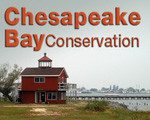 Chesapeake
Bay Conservation Chesapeake
Bay Conservation
NRCS provides technical assistance to farmers in the Chesapeake Bay watershed to
plan and apply conservation practices to improve water quality, restore
wetlands, and enhance wildlife habitat. Financial assistance is provided through
Farm Bill programs to help implement these practices. For more information
on conservation in the Chesapeake Bay Watershed:
 This item requires Adobe Acrobat —
Chesapeake Bay and Agriculture Conservation Resource Brief
This item requires Adobe Acrobat —
Chesapeake Bay and Agriculture Conservation Resource Brief

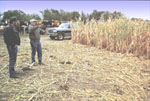 Sustainable
Agriculture 101 Sustainable
Agriculture 101
For newcomers to NRCS and other agencies or organizations that serve farmers,
SARE is serving up a free, online course in sustainable agriculture concepts and
principles. The course provides a detailed introduction to sustainable
agriculture and delves into what sustainable agriculture means for farmers,
ranchers and communities. Perhaps most important, it explains how sustainable
concepts relate to the roles of educators as they try to improve farming and
ranching systems in their areas.

 State-of-the-Art
Technology State-of-the-Art
Technology
In 1952, Montana NRCS snow surveyor Ashton Codd was busy with latest model of
Merchant Calculator. (NRCS image — click to enlarge).
NRCS This Week features a weekly historical photo and
caption. NHQ, districts, States, RC&D councils, and all other NRCS
entities are invited to submit a historical photo of activities or individuals
who have worked or are working for the agency along with a caption.

NRCS Directives for the Week of January 28, 2007
General Manual
Title 130-408, NRCS
Business Tools
The U.S. Department of Agriculture (USDA) prohibits discrimination in all its
programs and activities on the basis of race, color, national origin, age,
disability, and where applicable, sex, marital status, familial status, parental
status, religion, sexual orientation, genetic information, political beliefs,
reprisal, or because all or a part of an individual's income is derived from any
public assistance program. (Not all prohibited bases apply to all programs.)
Persons with disabilities who require alternative means for communication of
program information (Braille, large print, audiotape, etc.) should contact
USDA's TARGET Center at (202) 720-2600 (voice and TDD). To file a complaint of
discrimination write to USDA, Director, Office of Civil Rights, 1400
Independence Avenue, S.W., Washington, D.C. 20250-9410 or call (800) 795-3272
(voice) or (202) 720-6382 (TDD). USDA is an equal opportunity provider and
employer.
| | |


